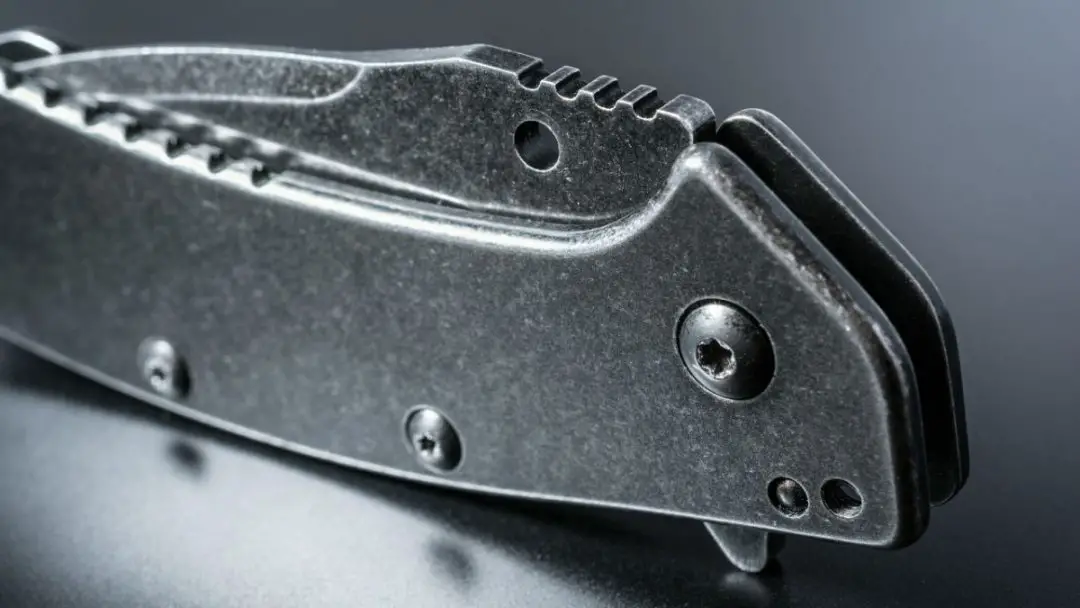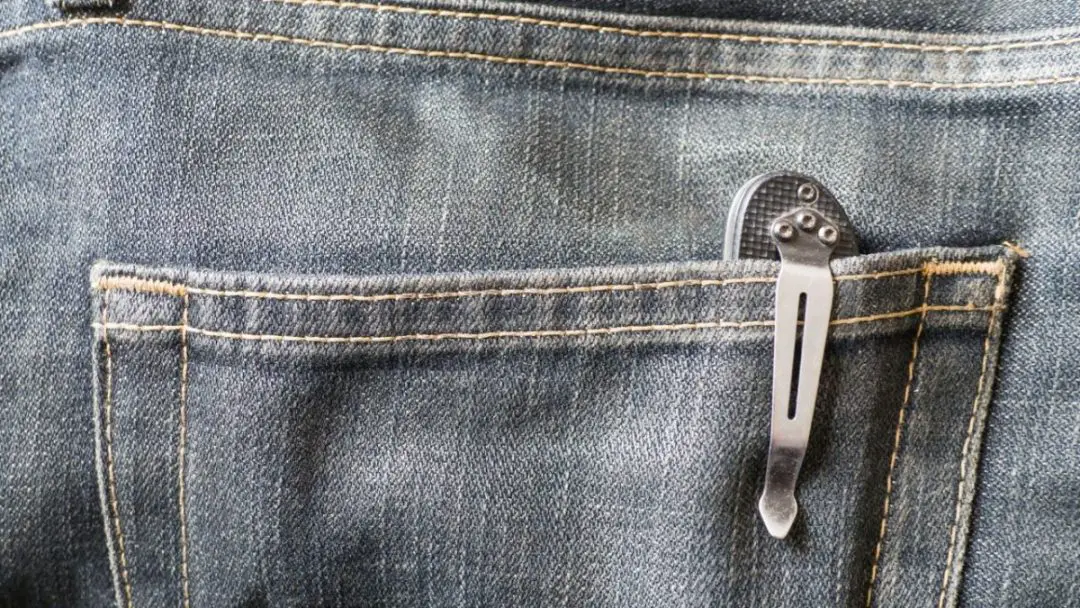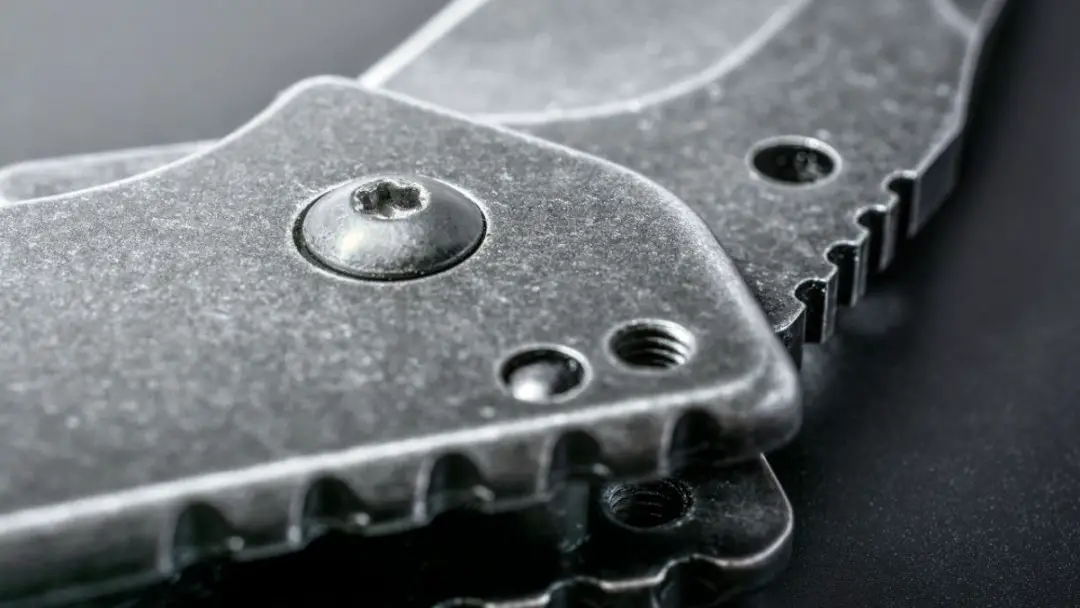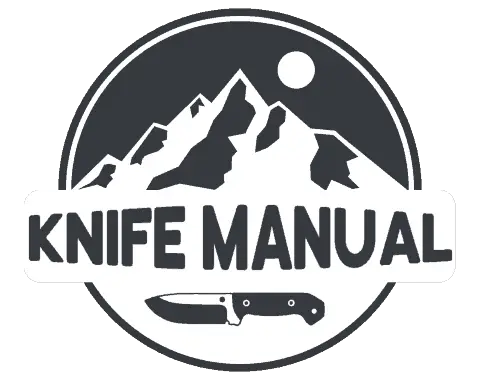
When you buy a new folding knife, the hinge is often difficult to move and the entire knife just doesn’t open very easily. While this causes a lot of troubles and headaches for many people, there are some simple and effective solutions to this that will make your new folding knife open up with ease.
The best way to make a new folding knife open easily is just to use the knife a lot. If you are unable to break-in your folding knife naturally, then is it a good idea to use other methods such as lubricant on the hinge and loosening/tightening the pivot screw to make the blade open easier.
Oftentimes, just using your folding knife and opening it often is enough to loosen it up and get it to open smoothly and easily. But there are times where that just isn’t enough and it takes a little bit of work and tweaking to get the results that you want.
Table of Contents
How to Break-In and Loosen a New Folding Knife
When you buy a brand new folding knife, it is really new, shiny, and polished. But there can be downsides to this especially because new folding knives often have trouble opening easily and smoothly.
Luckily, you don’t have to know a lot about how knives work to get a new knife opening smoothly and nicely.
There are many ways to loosen and break in a new folding knife, and while many of them work to varying degrees, the tips below are my personal favorites that have given me great results.
Use and Open the Knife Often
This is one of the best ways to make a new folding knife open with ease because it is quite simple and you will get to know your new knife very well in the process. Just using and opening your knife a lot is the preferred way to loosen a new folding knife because it is natural and will yield the best long-lasting results.
All of the other methods of loosening and making a new folding knife open easier should only be done after you have given this method a shot.
To make a new folding knife open super smoothly, it is often as simple as watching a movie in your living room and just opening and closing the knife a lot, or just putting the new knife in your pocket and using it as an everyday carry knife.
Eventually, after enough use and opening, your new folding knife will wear in at the hinge and become easier to open. The more you use your new folding knife, the easier it will become to open.
While it is highly recommended to try this method before jumping to one of the other methods listed in this article, there are some times where you need something extra to get your new folding knife to open as smoothly as you would like. Only then should you try to add lubricant to the hinge or any of the other methods.
The main reason for this is because the knife maker or manufacturer usually does their best to make their knives open as smoothly as they can. If they knew that their knife was going to be hard to open, it is likely that they would, or did, oil the hinge of the knife. Just trust the knifemaker a little, and give the natural way of loosening a new folding knife an honest try before doing one of the other methods.
Apply a Lubricant to the Hinge
One of the most popular ways to make a new pocket knife open easier and smoothly is to apply some sort of lubricant to the hinge of the knife so that it causes less friction and glides open and closed.
As I mentioned before, you should really try to just break in your knife by using it and opening it a lot, but if that fails to yield the results that you want, your next best option is usually applying a little bit of lubricant to the hinge.
A lot of people think that they should just dump a lot of oil on their knife to loosen it and make it open easily. This can actually be damaging to your knife if you use too much or the wrong type of oil or lubricant. I recommend NanoLube because you can precisely put oil only where you need it and in appropriate amounts.
After you apply a small but sufficient amount of oil to your hinge and any other place where two pieces of material might touch, it is time to just use and open your knife a lot. It’s kind of like the first method of loosening your knife, but with a little bit of oil to help out the process.
Tighten or Loosen the Pivot Screw
This is the method of loosening a new folding knife that most people get wrong, at least on their first try. The key to loosening the pivot screw is to use the right tools and not loosen it too much.
If you don’t have a set of hex bits laying around or you don’t have one that is small enough for your knife, I recommend the CRKT Twist And Fix. This is the perfect little tool for the job and has a bit for almost any size hex screw that you will ever find on a knife.
Once you have the correct tool for the job, loosen the screw just a little. Do this in small increments until the blade is loose enough to open easily or to your liking. Usually, there should be no horizontal movement to the blade unless you are loosening it for a specific purpose where you prefer a super loose blade.
The manufacturer or maker of your pocket knife probably set the pivot screw on your knife to their recommended tightness. Just be careful loosening or tightening the pivot screw and make sure it is absolutely necessary before doing so.
As I said before, the key to loosening a pivot screw on a new folding knife is to take it super slow. Between small adjustments, use the knife a little bit and open it a few times. Sometimes a knife’s pivot screw doesn’t need to be loosened as much as you might have thought.
A small turn of a hex screw seems to go a long way on a folding knife pivot screw in my experience.
Loosen and Open up the Pocket Clip

While this doesn’t pertain exactly to the smoothness of a new pocket knife’s blade opening and closing, breaking in a pocket clip is also a part of breaking in a new folding knife.
One of the best ways to go about loosening a folding knife pocket clip is to find a pad of paper, leather, or anything else that is not that rough and about a quarter of an inch tall. Then, open up the pocket clip on your knife and insert the material under the pocket clip. Leave it there for a moment before removing it and repeating it again.
After a few times of opening up the pocket clip to its full capacity using the pad of paper or other material, it should be pretty loose and able to easily clip onto your pocket. Make sure that the material isn’t too large or else you risk breaking your pocket clip on your new knife.
This is a really simple and effective way to loosen a clip on a pocket knife because a tight pocket clip can really become annoying and cumbersome. I’ve had many knives where I didn’t loosen the pocket clip, and when I needed to quickly just clip the knife into my pocket, it took way too much effort to pry open the clip.
Make sure that you use an appropriately sized piece of material to loosen your pocket clip on your knife. If the material is too thick, you can stretch your clip too much and it might snap. When you are inserting the material under the clip, it should not feel like you are about to break it.
Just do yourself a favor and loosen your pocket clip so you don’t regret it later when you need it. This can also be done using just regular use of a pocket knife, but it will usually take a good while to fully become loose and able to be easily opened.
Other Problems that Could Stop Your New Folding Knife from Opening Easily
While there are many things that you can do to a new folding knife to make it open easier and smoothly, sometimes there is a bigger problem than the hinge of the knife just being stubborn.
Occasionally there are defective knife hinges and folding mechanisms where the best option is to contact the manufacturer to figure it out. More often than not it is just a stubborn hinge that just needs some good old fashion use, or there could be something in the knife that is stopping the blade from opening easily.
Clean the Blade
When a new folding knife is made, there is the off chance that something could get stuck to the blade and prevent it from opening very smoothly or at all. While this is very rare because many knife companies quality checks their blades and make sure that they open properly, it still can happen.
It could be a piece of packaging from shipment or a piece of debris from the manufacturing facility. Whatever it is, it is a good idea to check that your blade is clean and clear to make sure that your knife can open super easily without something interrupting its movement.
This might seem like an obvious thing, but sometimes things can either stick to the blade or fall off and get wedged in the groove where the blade folds into the handle when it’s closed. One little piece of dirt or cardboard can really hinder a knife blade from closing all the way and doing so super smoothly.
Clean the Hinge
As with the previous method of making sure that your new knife can open and close smoothly, cleaning the hinge might seem kind of obvious but can really help the smoothness of a knife blade.
You don’t have to always take the entire knife apart to clean the hinge, simply running it under some water and then drying it off well will often be sufficient. Obviously, if there is a lot of visible dirt and things in the hinge, you might want to do a more thorough clean of the knife to get everything out and make it open super smoothly.
But for most new folding knives, simply looking at and making sure that there is no debris or anything in the hinge will often be enough.
Anything that is stuck in the hinge of a folding knife that isn’t supposed to be there could cause a lot of damage to the hinge and opening system if you leave it there. It is important to really look and clear out any packaging material or anything that could have got stuck in there from the manufacturer.
Making sure that your knife hinge is clear just checks off one of the potential things that could be stopping your knife from opening smoothly and easily.
What Not To Do When You Break-In and Loosen a New Folding Knife

Loosening and breaking in a new folding knife is a pretty straightforward and simple process. But there are definitely some common mistakes that people make on their first or second attempt at it as well as just some plain bad ideas that you should not do to your new folding knife.
One of the biggest mistakes that I see people make, and that I made, is just not giving a knife time to properly break-in and jumping straight to the oil and loosening the pivot screw. The truth is, a brand new folding knife is never going to open super smoothly because of the points in the hinge where two pieces of material touch each other haven’t had time to wear in and become smooth.
Just be patient and give your new folding knife time to wear in and let the parts of the hinge and places where materials touch each other “marry together”. This often takes time and a lot of opening and closing of the folding knife.
Once you have determined that it is a good idea to add oil to a knife’s hinge, don’t just dump a lot on there. This can have many bad side effects on your knife, so it is usually a good idea to use lubricant and oil on a folding knife hinge sparingly.
Just take it slow and only add as much as you need. Between small drops of lubricant on the hinge, use the knife a little and open and close it. Even if you add oil or a lubricant to the hinge of your folding knife, you still must wear it in to make the blade open smoothly for a long time.
Another common mistake when loosening the pivot screw on a folding knife is just turning the screw a lot and hoping for the best. My best advice for loosening the blade of a knife using the pivot screw is to take it SUPER slowly. Just like with the lubricant on the hinge, make small adjustments and use the knife in between.
Also, when you loosen and break-in the pocket clip on a new folding knife, take it slow and don’t shove a giant piece of material under the clip. The clip is not meant to open super wide, so be careful and don’t overstress the clip so much that it snaps. Trust me, it’s pretty easy to snap a pocket clip so take it slow.
Conclusion
Overall, loosening and breaking in a brand new pocket knife is a pretty simple thing that often happens on its own with just normal use of the pocket knife. However, sometimes it needs a little bit of help to get started, and that’s where the lubricant and loosening or tightening the pivot screw comes in.
Before jumping to oiling the hinge and moving the pivot screw, it is also a good idea to clean up the knife and make sure there isn’t anything stuck in the hinge or on the blade. I cannot count the number of times that I have been frustrated that a knife is just super hard to open and it turns out to be a thin piece of cardboard or other material that is just lodged in the hinge or in the area where the blade folds into the handle when the knife is closed.
Just heed the advice given in this article when adjusting the pivot screw or breaking in your knife, and you should do fine. Use your common sense and don’t do something to your knife that is crazy just for the sake of making it open easily and smoothly. You are much better off just using it and letting it break in naturally than permanently messing up your knife just to make it happen faster.

